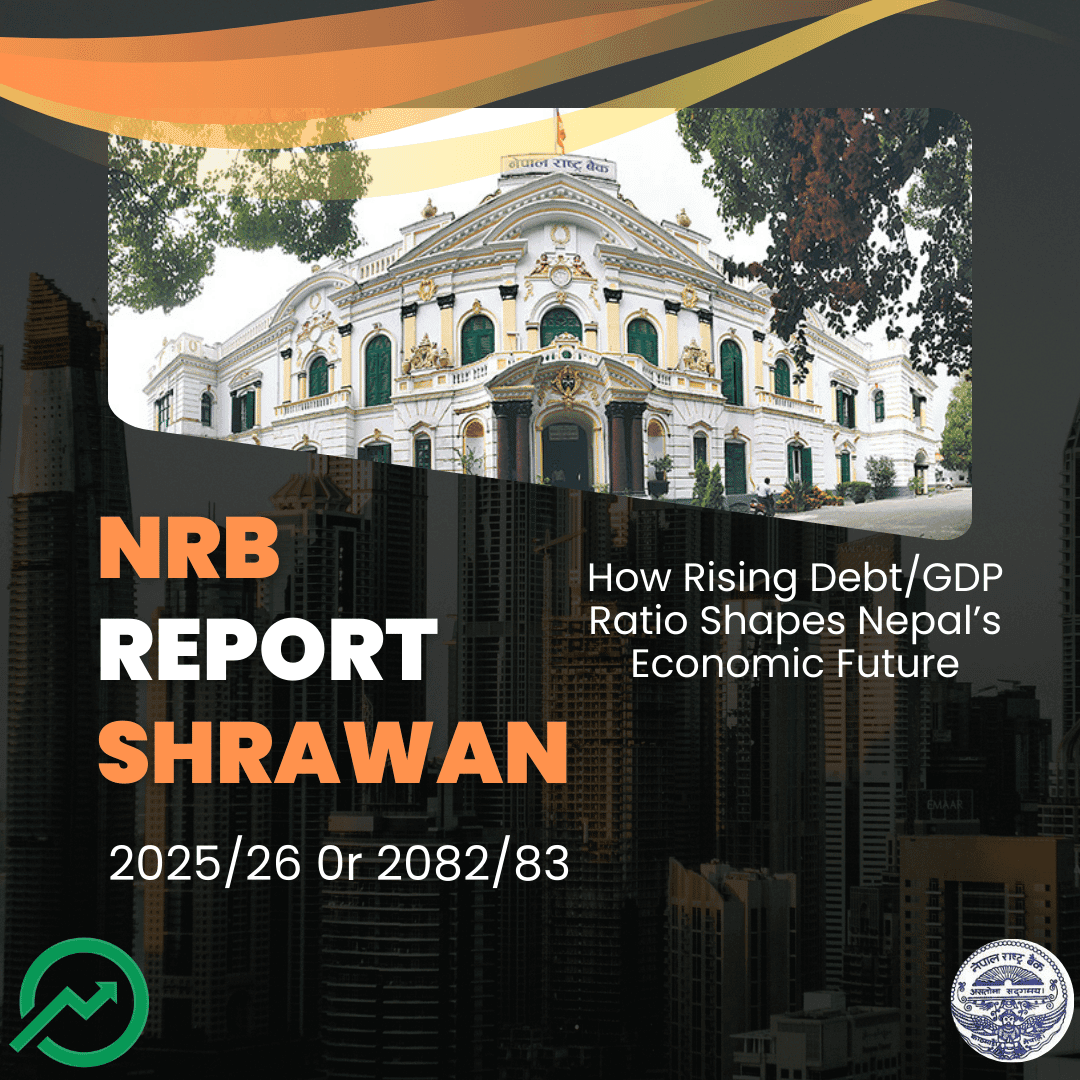By Sandeep Chaudhary
How Rising Debt/GDP Ratio Shapes Nepal’s Economic Future

Nepal’s debt profile has expanded significantly over the past few years, with both domestic and external debt rising as a share of GDP. In FY 2020/21, domestic debt stood at 18.4% of GDP and external debt at 21.5%, totaling around 40% of GDP. By FY 2024/25, domestic debt had risen to 20.8%, while external debt climbed to 22.9%, pushing the total public debt burden to 43–44% of GDP. Although this level is still below the danger thresholds seen in global debt crises, the trend is upward, signaling mounting fiscal pressures.
The rising debt-to-GDP ratio has several implications for Nepal’s economic future. On the positive side, moderate debt levels can support infrastructure financing, hydropower expansion, and social investments that raise long-term growth potential. With concessional external loans and relatively low domestic borrowing costs (T-bill rates below 3%), Nepal has the opportunity to leverage debt to accelerate development if resources are used efficiently.
However, the risks are becoming more visible. A higher debt ratio means a larger share of government revenue is being diverted toward debt servicing, reducing fiscal space for productive capital expenditure. Already, capital expenditure is stuck at 3–4% of GDP, while recurrent spending dominates, suggesting that borrowed money is not being fully translated into growth-enhancing assets. This weakens the debt-growth link and raises the possibility of debt dependency.
Another challenge lies in the external vulnerability. External debt, though concessional, must be serviced in foreign currency. Nepal’s repayment ability depends heavily on remittance inflows (Rs. 1.7 trillion in FY 2024/25) and growing foreign exchange reserves (USD 20 billion). But these buffers are not guaranteed. Any slowdown in remittance inflows, delays in hydropower export earnings, or shocks to imports could stress repayment capacity, exposing the economy to external risks.
From a structural perspective, the rising debt ratio also highlights revenue weaknesses. Nepal’s revenue-to-GDP ratio has fallen below 20%, limiting the government’s ability to rely on domestic income for expenditure. This makes borrowing a default option to plug fiscal gaps, creating a cycle of debt buildup without sustainable repayment capacity.
Looking ahead, Nepal’s economic future will depend on whether debt is used productively or passively. If directed toward infrastructure, hydropower, digital transformation, and productivity-enhancing projects, rising debt could lift growth, expand the tax base, and reduce dependency on remittances. But if the current trend of high recurrent expenditure and low project efficiency continues, debt accumulation will constrain growth, crowd out private investment, and heighten vulnerability.









